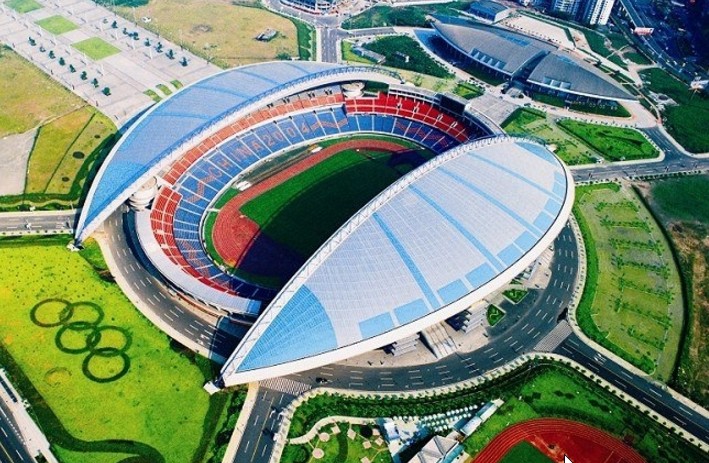Hello readers and welcome to our very first post! We are Natasha and Eunice, a pair of year 3 Geography majors who also happen to be avid fans of major sporting events. While I personally enjoy keeping up with the quadrennial Olympics which showcases a plethora of exciting sports competitions, Eunice is a loyal fan of Liverpool Football Club and supports Lewis Hamilton in all of his Formula 1 races. With that, I’m sure many of you are wondering; “what is the relationship between major sporting events and Geography?”. While there are many ways of analysing these events in a geographical lens, the most distinct relationship between the two subjects is environmental pollution. The title of our blog “big sports, Bigger Footprints” symbolises how big sporting events leave behind even bigger ecological footprints that many of us are unaware of since the main focus of such events are to support our favourite athlete as they compete against their rivals.

source: Goalzzz

source: Formula1.com
As seen in the photos above of an Olympic stadium and a Formula 1 race track respectively, these large and intricately-designed infrastructures require a lot of power and resources to maintain, which contributes to carbon emissions. It is also unsurprising that sporting events are big producers of anthropogenic pollution, as thousands of spectators and participants travel from multiple regions to one destination via carbon-emitting transportations. A study found that “the average attendee generates a footprint seven times greater than someone going about normal, everyday activity. Increased travel by event visitors accounted for the biggest part of this significant increase”. Furthermore, “the consumption of food and drink, and the energy and resources required to produce that food and drink, makes up the next largest part of the footprint” (Warren, 2017). Thus, as consumers of such energy-intensive events that produce massive amounts of anthropogenic pollution, we feel that it is important for us to raise awareness on the types of pollution produced by different major sporting events. We also aim to highlight how spectators can play their part in reducing their own ecological footprints, especially since most of the people reading this blog are likely to be consumers of such events, just like us!
I hope this introductory post has piqued your interest in finding out more about how your favourite major sporting event contributes to environmental pollution, and how we can be more mindful of the ways we consume this industry such that we can all play our part in making it a greener industry! Stay tuned for our next blog post ~
Cheers,
Natasha
References
Formula 1. Available at: https://www.formula1.com/en/latest/features/2016/10/highs-and-lows—which-f1-track-has-the-most-elevation-changes-.html
Goalzzz. Available at: https://www.goalzz.com/?stadium=6277
Warren, G (2017). Big Sports Events Have Big Environmental Footprints. Could Social Licenses To Operate Help? Forbes. Available at: https://www.forbes.com/sites/uhenergy/2017/12/11/big-sports-events-have-big-environmental-footprints-could-social-licenses-to-operate-help/#197b65550cf6 [Accessed 3 Sep. 2020]
